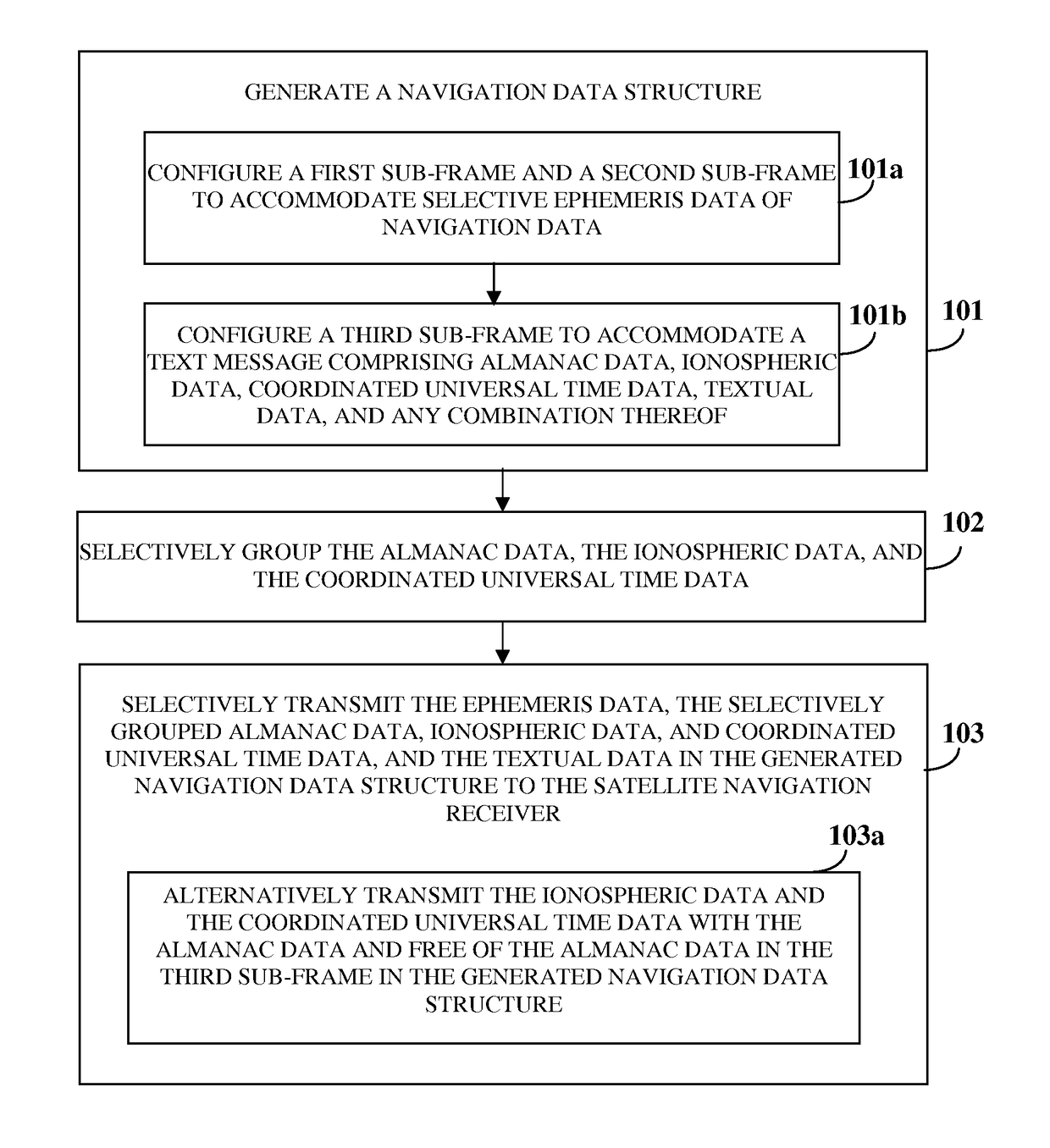Navigation data configuration for optimal time to first fix
a technology of navigation data and optimal time, applied in the direction of satellite radio beaconing, measurement devices, instruments, etc., can solve the problems of multiple delays, complex satellite navigation receivers, and high deployment costs
- Summary
- Abstract
- Description
- Claims
- Application Information
AI Technical Summary
Benefits of technology
Problems solved by technology
Method used
Image
Examples
Embodiment Construction
[0050]FIG. 1 illustrates a method for reducing time to first fix (TTFF) in a satellite navigation receiver, for example, a single or dual frequency Indian regional navigational satellite system (IRNSS) receiver. The method disclosed herein reduces the TTFF by reducing ephemeris time Teph of the satellite navigation receiver in a single frequency mode of operation without increasing satellite data rate or power required for transmission of navigation data by the satellites. An optimal TTFF, that is, a minimal time required to transmit navigation data for “n” visible satellites with “j” sub-frames is computed using the formula below:
TTFFopt=mintΣnΣjSFj-enc
[0051]The navigation data transmitted by each satellite comprises primary navigation data and secondary navigation data. The ephemeris and clock parameters of the satellites constitute the primary navigation data whereas almanac data, coordinated universal time (UTC) data, ionospheric data such as correction terms, and message type ...
PUM
 Login to View More
Login to View More Abstract
Description
Claims
Application Information
 Login to View More
Login to View More - R&D
- Intellectual Property
- Life Sciences
- Materials
- Tech Scout
- Unparalleled Data Quality
- Higher Quality Content
- 60% Fewer Hallucinations
Browse by: Latest US Patents, China's latest patents, Technical Efficacy Thesaurus, Application Domain, Technology Topic, Popular Technical Reports.
© 2025 PatSnap. All rights reserved.Legal|Privacy policy|Modern Slavery Act Transparency Statement|Sitemap|About US| Contact US: help@patsnap.com



